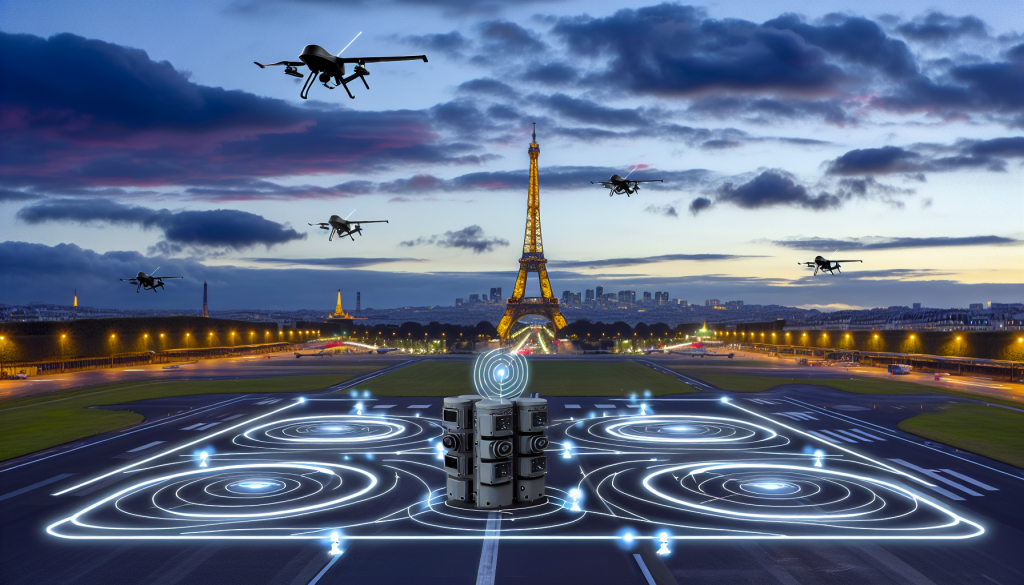Paris Airports Leading the Charge in Counter-Drone Technology
Paris is not only known for its iconic Eiffel Tower and rich history; it has also positioned itself at the forefront of counter-drone technology. The city’s major airports—Roissy-Charles-de-Gaulle and Orly—have developed sophisticated detection systems that combine radar, optical sensors, and artificial intelligence to tackle the growing threat of unauthorized drone incidents. The statistics are startling: these airports handle over 2,000 unauthorized drone encounters each year, a challenge that demands cutting-edge technological solutions.
A Response to Disruptions
The turning point for Paris airports came in 2016 when Orly Airport experienced significant flight disruptions due to drone activity, leading to diverted flights. Following this incident, Groupe ADP, the operator of both airports, recognized the need for a robust defense system against drones. Far from dismissing these anomalies as one-off events, the organization made airport drone defense a strategic priority. This foresight paved the way for a dynamic approach to aerial security, addressing an evolving threat landscape that has recently garnered attention across Europe, especially in light of mysterious drone incursions into military airspace in Denmark and Norway.
Pioneering Early Interventions
Unlike many airports that waited for regulatory frameworks to catch up with drone technology, Paris took immediate action in 2017 by establishing Hologarde. This dedicated subsidiary focuses on monitoring and managing drone activity within low-altitude airspace. Hologarde doesn’t operate in isolation; it collaborates with defense giant Thales and the French Air Navigation Services Directorate to devise comprehensive countermeasures. This collaborative model serves as a blueprint for other European airports attempting to combat similar threats.
The costly wake-up call of the 20-minute flight diversion at Orly proved to be pivotal. Groupe ADP recognized that drone incursions were not mere incidents but an ongoing security challenge requiring permanent technological solutions.
Innovative Detection Systems
At the core of Paris’s anti-drone strategy lies a multifaceted detection system designed to reduce false alarms while ensuring constant vigilance. This architecture integrates various detection methods—optical cameras, radar arrays, and radio frequency sensors—each tailored for different scenarios and environmental conditions.
Artificial intelligence acts as the operational brain, expertly differentiating threats from innocuous elements like birds or other aircraft. Recent advancements have led to the integration of commercial detection tools such as the DJI Aeroscope, which provides real-time telemetry tracking and can identify specific drone models. This level of monitoring has proven invaluable during projects like EUROCONTROL’s ACUTE initiative, which studied drone activity patterns in the Paris region and identified operational hotspots.
Contextualizing the Threat in Europe
The challenge of unauthorized drones extends beyond Paris, as illustrated by events earlier this year. Denmark implemented a temporary ban on civilian drone flights aimed at securing an EU summit following repeated airspace violations by suspected foreign-operated drones. Across NATO member countries, there is a heightened emphasis on counter-drone measures, especially as concerns grow about hybrid attacks and aerial reconnaissance by state actors.
The advancements made by Paris airports in counter-drone technology have thus gained urgency and significance, propelling European authorities to acknowledge that reactive measures are inadequate for dealing with a threat that evolves as swiftly as the consumer drone market.
Insights from DroneXL
The extensive investments made by Paris in multi-layered drone defense systems highlight an essential truth: safeguarding airports from unauthorized drone activity isn’t merely a matter of deploying technology, but rather an ongoing arms race. This continuous evolution requires collaboration among aviation authorities, defense contractors, and AI developers. With over 2,000 annual drone-related incidents observed, it’s clear that such intrusions have transitioned from exceptional to commonplace.
What’s particularly striking about Paris’s strategy is the seamless integration of military-grade detection systems with commercial solutions like DJI Aeroscope, resulting in a hybrid framework that proves both sophisticated and practical. As other airports scramble to replicate this success, a pressing question arises: will we see standardized counter-drone strategies emerge across Europe, or will nations forge proprietary solutions that complicate cross-border collaboration during incidents?
Considering the current landscape—marked by Denmark’s flight bans and NATO’s escalated alertness—it is apparent that airport drone defense will require even more complexity and investment in the future. Will regulatory measures, like mandatory geo-fencing and remote drone IDs, become essential inputs for drone management? Or will detection technology always be playing catch-up in this ever-evolving battlefield?
What are your thoughts on the necessity of airport drone defense systems? Should airports prioritize investments in detection technologies alone, or should they look into active countermeasures as well?

